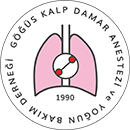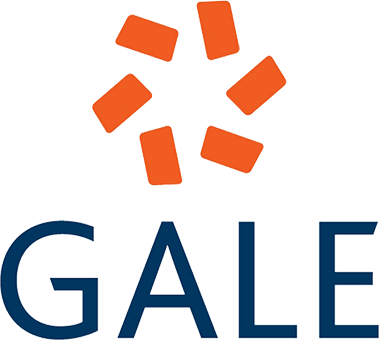

Koroner Arter Bypass Greft Cerrahisi Uygulanan Hastalarda İnternal Karotis Arter Darlığı Olan ve Olmayanların Near İnfrared Spectroscopy ile rSO2 Değerlerinin Karşılaştırılması
Hale Kefeli Çelik1, Zahide Doğanay1, Atilla Kanca21Samsun Eğitim ve Araştırma Hastanesi, Anesteziyoloji ve Reanimasyon Kliniği, Samsun,Türkiye2Samsun Eğitim ve Araştırma Hastanesi, Kalp ve Damar Cerrahisi Kliniği, Samsun,Türkiye
GİRİŞ ve AMAÇ: Çalışmada, karotis arter darlığı olan ve olmayan hastaların serebral oksijen satürasyonu (rSO2) takip ederek NIRS'ın KABG ameliyatlarında rutin olarak kullanılabilirliliğini araştırıldı.
YÖNTEM ve GEREÇLER: KABG uygulanacak olan 80 hasta iki gruba ayrıldı. Preoperatif yapılan renkli doppler ultrasonografi ile internal karotis arterlerinde darlık olan yada stabil plağı olan hastalar Grup I (n=40), internal karotis arterde darlık tespit edilmeyen hastalar Grup II'yi (n=40) oluşturdu. Her iki grupta; nabız, sistolik ve diyastolik kan basıncı, ortalama arteriyel kan basıncı, nazofarengeal ısı, hematokrit, PaO2, PaCO2, SPO2, BİS, sağ ve sol rSO2 değerleri ve rSO2 yüzde değişim oranları karşılaştırıldı.
BULGULAR: Her iki grupta da erkek/kadın oranı 27/13 şeklindeydi. Hastaların ortalama yaşı grup Ide 60.82±9.63 (39-79) yıl, grup IIde 59.95±9.54 (41-80) yıl idi. Gruplar arasında demografik veriler, preoperatif labaratuar ve BİS değerleri, ameliyat ve pompa süresi açısından bir fark izlenmedi. Arteriyal kan gazı değerleri, sağ ve sol rSO2 değerlerinde tüm ölçüm zamanlarında gruplar arasında fark bulunmadı (sırasıyla p=0,309, p=0,114). Her iki grupta tüm ölçüm zamanlarında rSO2 değerlerinde %20'ten fazla azalma izlenmedi. Ancak grup I'de rSO2 yüzde değişim oranları grup II'ye göre istatistiksel olarak anlamlı bulundu (sağ p=0,031, sol p<0,001). Postoperatif dönemde her iki grupta da inme izlenmedi.
TARTIŞMA ve SONUÇ: KABG uygulanan hastalarda kalp akciğer pompasına geçildiğinde beyin perfüzyonunda düşme olmaktadır ve NIRS ile peroperatif serebral perfüzyonun takibi önemlidir. rSO2'deki yüzde değişim oranları karotis arterde darlık olan hastalarda daha fazla olmaktadır.
Comparison of Regional Cerebral Oxygen Saturation Values by Using Near-Infrared Spectroscopy in Patients who Underwent Coronary Artery Bypass Graft with and Without Internal Carotid Artery Stenosis
Hale Kefeli Çelik1, Zahide Doğanay1, Atilla Kanca21Samsun Research and Education Hospital, Clinics of Anesthesiology and Reanimation, Samsun,Turkey2Samsun Research and Education Hospital, Clinics of Cardiovascular Surgery, Samsun, Turkey
INTRODUCTION: In the study, the regional cerebral oxygen saturation (rSO2) of patients with and without carotid artery stenosis was monitored to see whether or not NIRS can be used routinely in CABG operations.
METHODS: Eighty patients undergoing CABG were divided into two groups. Following the preoperative colour Doppler ultrasonography, the patients with internal carotid artery stenosis or with stable plaque were included in Group I (n=40), while the patients having no internal carotid artery stenosis were included in Group II (n=40). Pulse rates, systolic and diastolic blood pressures, mean arterial blood pressures, nasopharyngeal temperatures, haematocrit, PaO2, PaCO2, SpO2, BIS, right, and left rSO2 values, and relative changes in rSO2 from baseline of the two groups were compared.
RESULTS: The male/female ratios in both groups were 27/13. The mean age was 60.82±9.63 (3979) years in Group I and 59.95±9.54 (4180) years in Group II. No differences were observed in terms of demographic data, preoperative laboratory and bispectral index (BIS) values, and time of operation and CPB. In addition, no differences were observed between the arterial blood gas values or the right and left rSO2 values of the groups at all measurement time points (p=0.309 and p=0.114, respectively). In both groups, the decrease in rSO2 values was not higher than 20% at all measurement time points. However, the relative changes in rSO2 from baseline in Group I were statistically different compared to those in Group II (right p=0.031, left p<0.001). No stroke occurred in the groups postoperatively.
DISCUSSION AND CONCLUSION: In patients undergoing CABG, brain perfusion reduces when a CPB pump is put into operation, and the monitoring of intraoperative cerebral perfusion with NIRS is crucial. In patients with carotid artery stenosis, relative changes in rSO2 from baseline are higher.
Makale Dili: İngilizce
(980 kere indirildi)

















